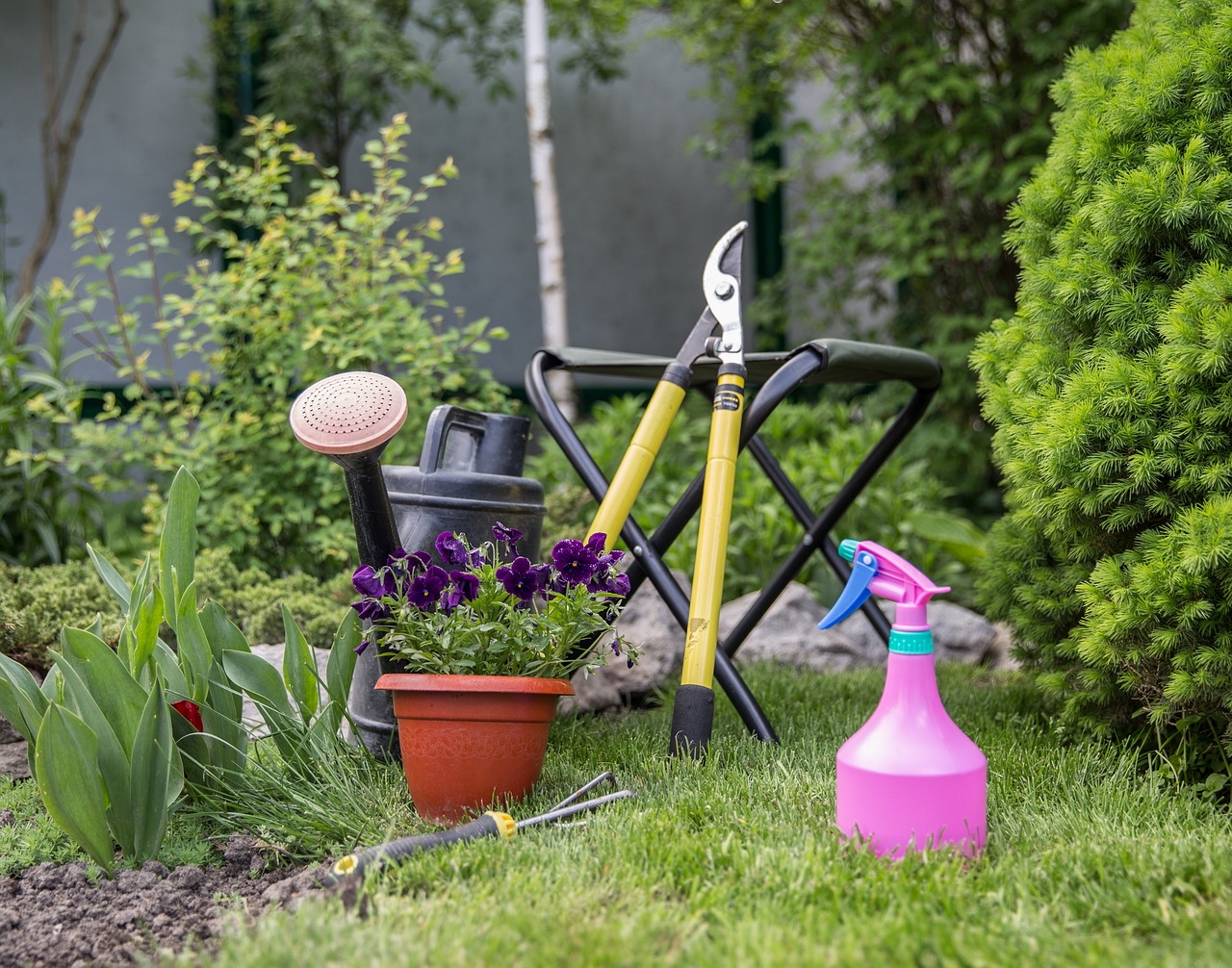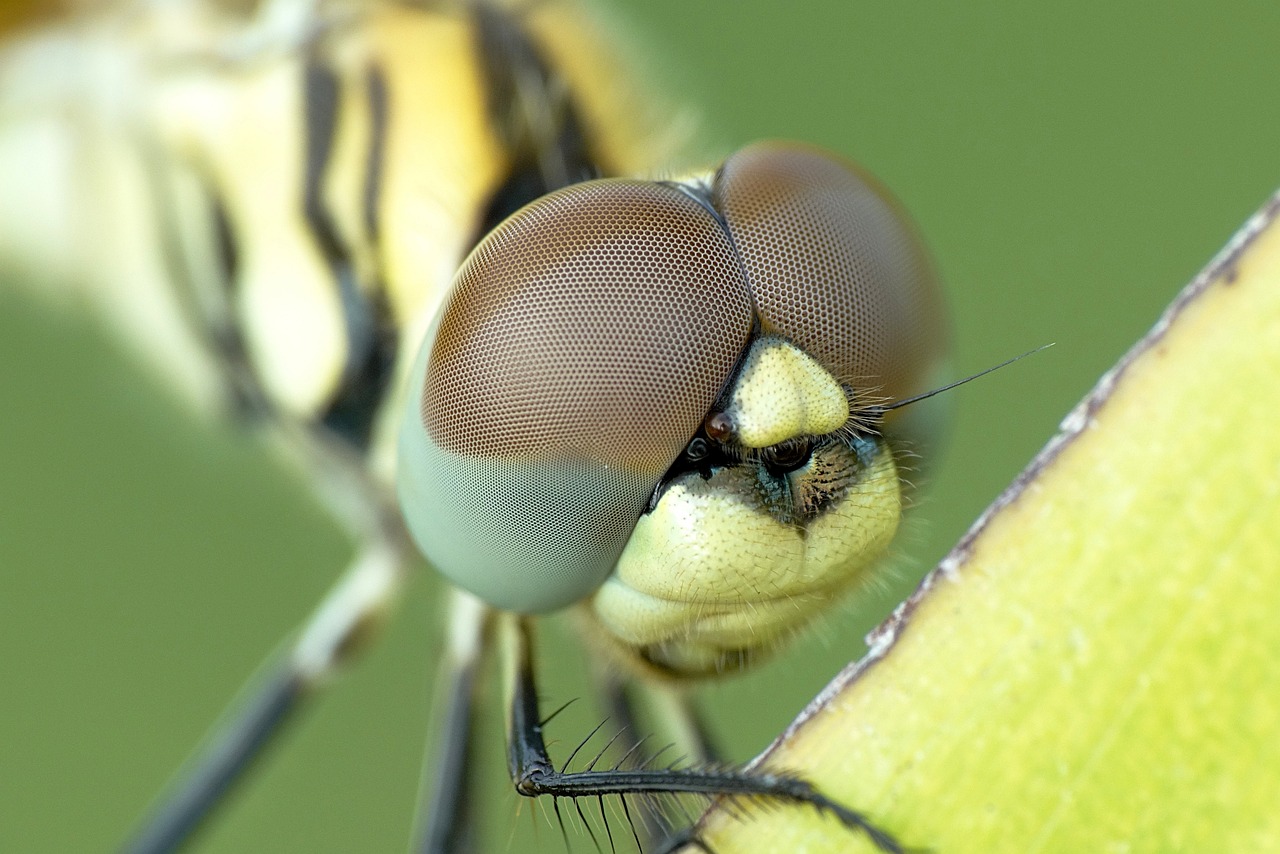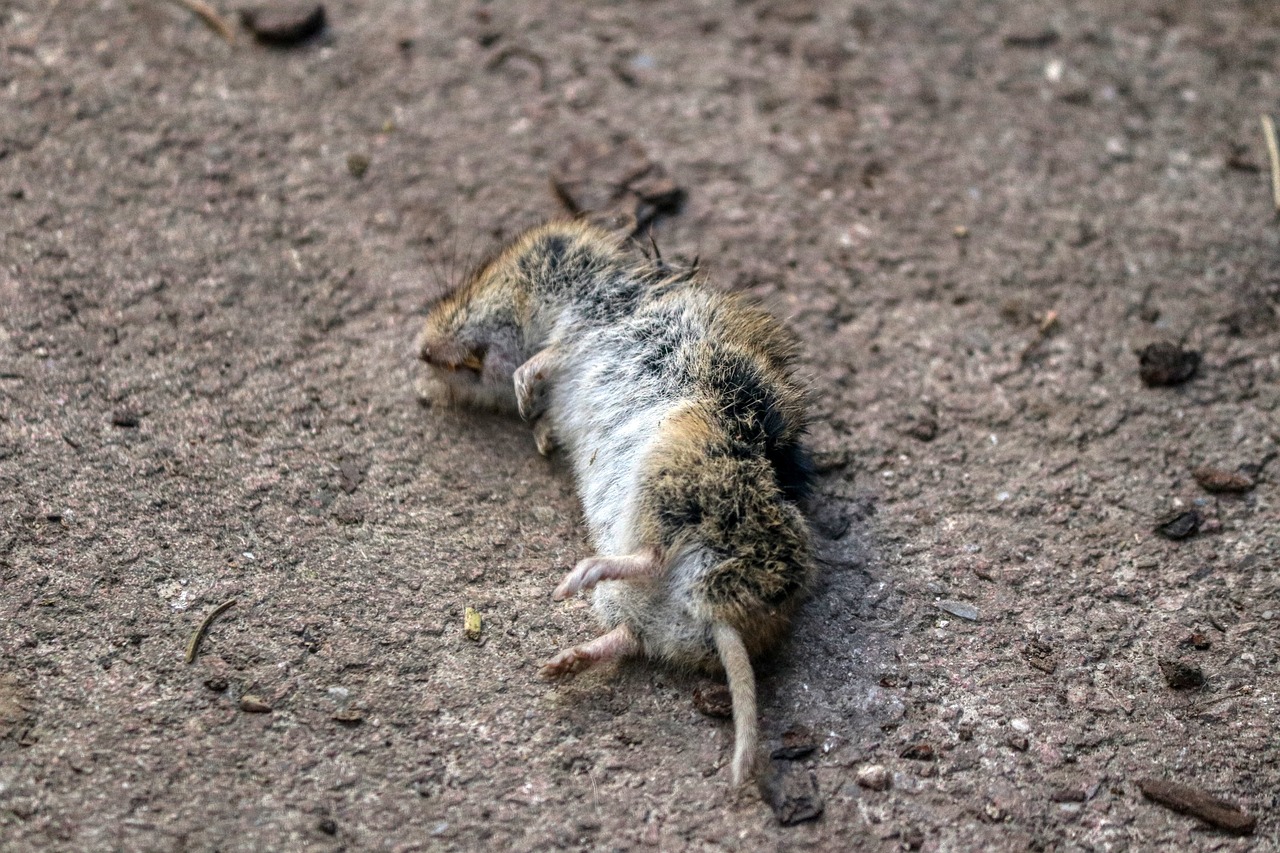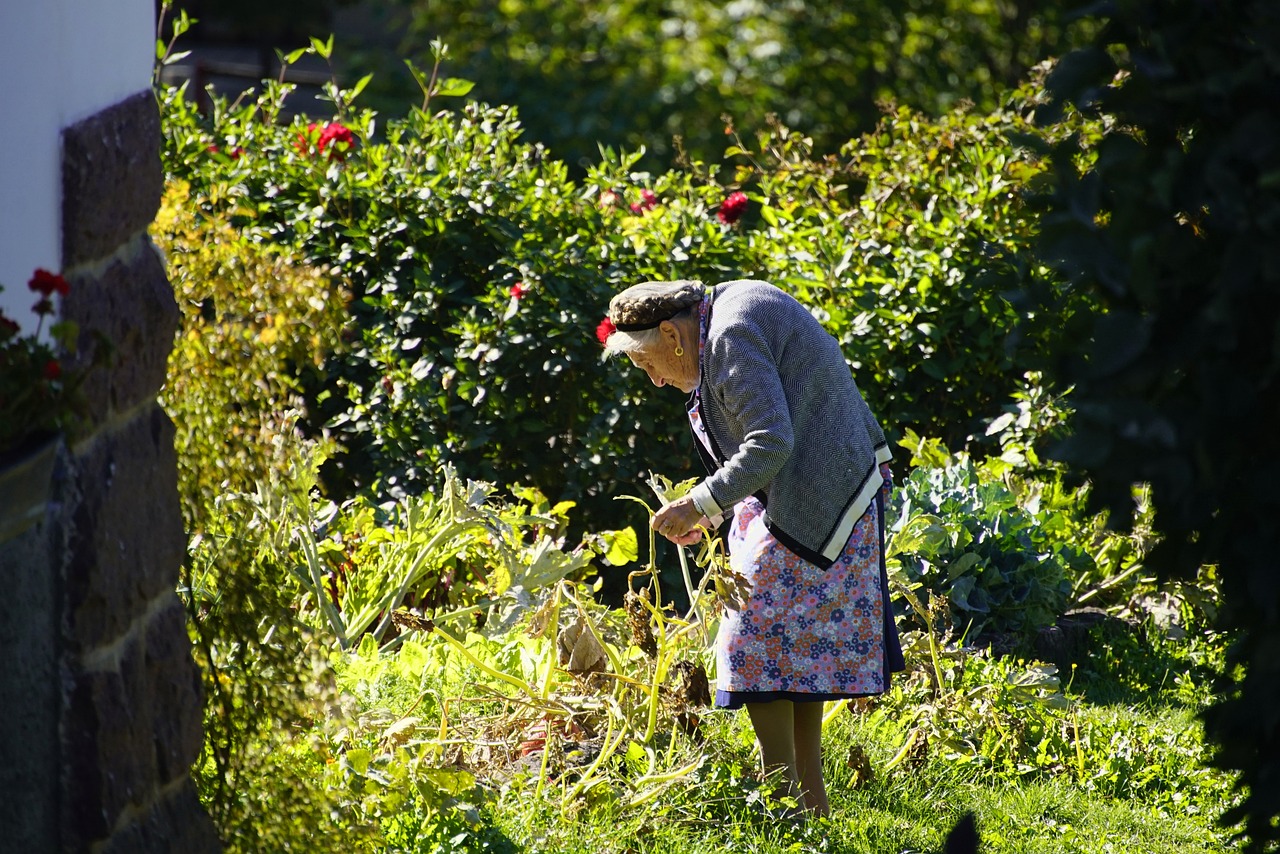A Guide for Eco-Friendly Pest Control in Gardens
This article explores sustainable methods for managing pests in gardens, emphasizing natural solutions that protect both plants and the environment while maintaining effective pest control strategies. In a world where the balance of nature is increasingly threatened by harmful chemicals and pesticides, adopting eco-friendly pest control practices is not just a choice; it’s a necessity. Imagine walking through your garden, surrounded by vibrant colors and the sweet scent of blooming flowers, knowing that you are nurturing this beauty without harming the delicate ecosystem around you. This guide will take you through the essentials of eco-friendly pest control, ensuring your garden thrives while respecting nature.
Eco-friendly pest control is all about using natural methods to manage pests in your garden. It’s like being a guardian of your plants, using sustainable practices that promote a healthy garden ecosystem. The importance of eco-friendly pest control cannot be overstated; it reduces reliance on harmful chemicals that can leach into the soil and waterways, affecting not just your plants but also local wildlife and even your family. By embracing these methods, you’re not just protecting your garden, but you’re also contributing to a larger movement towards environmental sustainability. Think of it as planting seeds of change—both in your garden and in the world around you.
Gardens are often invaded by a variety of pests that can wreak havoc on your plants. Understanding these common garden pests is crucial for effective control measures. From aphids to slugs, each pest has its own behavior and can cause different types of damage. For instance, aphids suck the sap from plants, leading to stunted growth and even plant death. On the other hand, slugs feast on leaves, leaving unsightly holes that can detract from the beauty of your garden. By learning about these pests, you can better prepare yourself to combat them using eco-friendly methods.
Identifying pests accurately is crucial for effective management. Look for key characteristics and signs that can help you diagnose pest problems in your garden. For example, if you notice sticky residue on your plants, it could be a sign of aphid infestation. Yellowing leaves might indicate a broader issue, such as nutrient deficiency or pest damage. Keep a close eye on your plants and familiarize yourself with the typical signs of pest activity. The more you know, the better equipped you’ll be to handle any situation!
Did you know that not all insects are bad for your garden? In fact, beneficial insects play a vital role in pest control. These little allies can help reduce pest populations naturally, enhancing the overall health of your garden. For example, ladybugs are famous for their appetite for aphids, while lacewings can consume a variety of pests. By attracting these beneficial insects to your garden, you’re creating a natural balance that can significantly reduce the need for chemical interventions. Consider planting flowers like marigolds or yarrow to attract these helpful critters!
Understanding the life cycles of common garden pests can be a game-changer in your pest control strategy. Each pest goes through various stages—egg, larva, pupa, and adult—and knowing when they are most vulnerable can help you time your interventions effectively. For instance, targeting the larval stage of a pest can be more effective than trying to control adults. By aligning your eco-friendly control measures with these life cycles, you can maximize your efforts and minimize pest damage.
Now that you’re familiar with the pests, let’s dive into some natural pest control methods! There are several strategies you can employ, such as organic sprays, traps, and companion planting. Organic sprays made from ingredients like neem oil or garlic can deter pests without harming beneficial insects. Traps can be effective for catching slugs or snails, while companion planting involves growing certain plants together to naturally repel pests. For example, planting basil near tomatoes can help keep aphids at bay. The beauty of these methods is that they are not only effective but also safe for the environment!
Prevention is key in eco-friendly pest control. By creating an environment that minimizes pest infestations, you can enjoy a flourishing garden without the constant worry of pest invasions. Simple practices such as crop rotation, maintaining proper spacing between plants, and regular garden maintenance can go a long way in keeping pests at bay. Additionally, consider using physical barriers like row covers to protect young plants from pests while they establish themselves.
Healthy soil promotes strong plants, which are less susceptible to pests. Improving soil health can be as simple as adding organic matter like compost or mulch. These practices not only enrich the soil but also enhance its structure, allowing for better water retention and root development. A robust plant is like a fortress, able to withstand pest attacks more effectively. By investing time in your soil, you’re investing in the long-term health of your garden.
Choosing the right plants can significantly reduce pest problems. Selecting native and pest-resistant plants can enhance your garden's natural defenses. Native plants are adapted to your local environment, making them more resilient to pests and diseases. Moreover, they often attract beneficial insects, creating a harmonious ecosystem in your garden. When planning your garden, consider incorporating a mix of plants that can thrive together, providing a natural balance that discourages pests.
Q: What are some signs of pest infestation?
A: Look for discoloration, holes in leaves, sticky residue, or visible insects on your plants.
Q: How can I attract beneficial insects to my garden?
A: Plant flowers like marigolds, dill, and yarrow to draw in ladybugs, lacewings, and other helpful insects.
Q: Are organic pest control methods effective?
A: Yes! Organic methods can be very effective when used properly and can help maintain a healthy garden ecosystem.
Q: How can I improve soil health?
A: Add organic matter such as compost, mulch, and practice crop rotation to enhance soil fertility and structure.

Understanding Eco-Friendly Pest Control
When it comes to gardening, the phrase eco-friendly pest control might sound like a buzzword, but it’s far more than just a trendy term. It represents a vital shift in how we approach pest management, focusing on methods that are not only effective but also safe for the environment. Imagine a garden where plants thrive without the harmful side effects of synthetic pesticides. This is the essence of eco-friendly pest control—it’s about creating a harmonious balance between nature and our gardening efforts.
At its core, eco-friendly pest control emphasizes the importance of maintaining a healthy garden ecosystem. Traditional pest control methods often rely on harsh chemicals that can disrupt this balance, harming beneficial insects and pollinators while contributing to soil and water pollution. In contrast, eco-friendly strategies prioritize natural solutions that protect both plants and the environment. By adopting these methods, gardeners can significantly reduce their reliance on harmful substances, promoting a sustainable approach to gardening.
One of the key principles of eco-friendly pest control is understanding that not all insects are bad. In fact, many insects play crucial roles in the ecosystem, such as pollination and pest regulation. By fostering an environment that supports beneficial insects, gardeners can naturally keep pest populations in check. This holistic approach not only protects your plants but also contributes to biodiversity, which is essential for a thriving garden.
Moreover, eco-friendly pest control is about prevention as much as it is about intervention. By creating conditions that deter pests from invading in the first place, gardeners can minimize the need for reactive measures. This includes practices like ensuring healthy soil, selecting pest-resistant plant varieties, and encouraging natural predators. It’s like building a fortress around your garden, where the walls are made of strong, healthy plants and the guards are beneficial insects ready to fend off intruders.
In summary, understanding eco-friendly pest control involves recognizing the interconnectedness of all living things in your garden. By embracing natural methods and fostering a healthy ecosystem, you’re not just protecting your plants; you’re also contributing to the greater health of our planet. As we delve deeper into this guide, you’ll discover practical strategies that will help you manage pests sustainably, ensuring your garden remains a vibrant and welcoming space for all forms of life.

Common Garden Pests
When it comes to gardening, one of the biggest challenges you may face is dealing with pesky intruders that threaten your plants. Understanding the is essential for any gardener who wants to maintain a healthy and thriving garden. These pests can range from tiny insects to larger animals, and each can cause varying degrees of damage to your beloved plants. By familiarizing yourself with these invaders, you can implement effective strategies to keep them at bay.
Some of the most notorious culprits include aphids, spider mites, and slugs. Aphids are small, soft-bodied insects that suck the sap from plants, leading to stunted growth and yellowing leaves. They tend to congregate in large numbers, making them a formidable foe. On the other hand, spider mites are microscopic pests that create fine webs on the undersides of leaves, causing a speckled appearance and eventually leading to leaf drop. Lastly, slugs and snails are notorious for their ravenous appetite, munching on leaves and stems, which can leave your plants looking like they’ve been through a battle.
To better understand these pests and prepare for their arrival, let’s take a closer look at their behaviors and the damage they can inflict:
| Pest | Behavior | Damage Caused |
|---|---|---|
| Aphids | Suck sap from plants; reproduce quickly | Stunted growth, yellowing leaves |
| Spider Mites | Feed on plant cells; create webs | Speckled leaves, leaf drop |
| Slugs/Snails | Feed at night; prefer moist environments | Holes in leaves, damaged stems |
In addition to these, there are other pests like whiteflies and caterpillars that you might encounter. Whiteflies are tiny, white insects that also suck sap, while caterpillars can be particularly destructive, as they munch through foliage with abandon. Knowing how to recognize these pests is half the battle. Look for signs such as holes in leaves, sticky residue, or even the presence of their eggs on the undersides of leaves.
One effective way to manage these pests is to monitor your garden regularly. Just as a detective examines clues at a crime scene, you should inspect your plants for any signs of pest activity. Early detection can make a significant difference in controlling infestations before they spiral out of control. Remember, the sooner you act, the better your chances of preserving your garden’s health.
By understanding the behaviors and signs associated with common garden pests, you can take proactive steps to protect your plants. In the next sections, we will explore how to identify these pests accurately and discuss natural pest control methods that can help keep your garden thriving without the need for harmful chemicals.
- What are the most common pests in gardens? Common pests include aphids, spider mites, slugs, whiteflies, and caterpillars.
- How can I identify garden pests? Look for signs such as holes in leaves, sticky residue, or visible insects on plants.
- What are some natural ways to control pests? Use organic sprays, traps, and companion planting to deter pests.
- How often should I check my garden for pests? Regular monitoring, ideally weekly, can help catch infestations early.

Identifying Pests
Identifying pests in your garden is a crucial step in maintaining a healthy and thriving ecosystem. Just like a detective solving a mystery, you need to gather clues to pinpoint which pests are causing trouble. Different pests exhibit unique behaviors and signs of damage, so knowing what to look for can save your plants from significant harm. For example, if you notice leaves with holes, it might be a sign of caterpillars or slugs munching away, while a sticky residue could indicate an infestation of aphids.
To effectively identify pests, consider the following characteristics:
- Appearance: Different pests have distinct physical traits. For instance, spider mites are tiny and may appear as specks on leaves, while Japanese beetles are easily recognizable with their metallic green bodies.
- Behavior: Observing how pests interact with plants can provide insights. Some pests, like whiteflies, tend to congregate on the undersides of leaves, while others, like grasshoppers, may be seen hopping around the garden.
- Damage Patterns: Look for specific damage patterns. For instance, leaf miners create tunnels within leaves, whereas root weevils will cause wilting and stunted growth due to root damage.
Furthermore, understanding the life cycles of these pests can greatly aid in identification. Many pests go through various stages, from eggs to larvae to adults, and recognizing these stages can help you take timely action. For example, catching caterpillar larvae early on can prevent them from turning into adult moths that lay even more eggs. Keep an eye out for the following signs:
| Pest | Signs of Infestation | Potential Damage |
|---|---|---|
| Aphids | Sticky residue, curled leaves | Stunted growth, disease transmission |
| Spider Mites | Webbing, yellowing leaves | Leaf drop, plant stress |
| Slugs | Irregular holes in leaves, slime trails | Defoliation, plant death |
By familiarizing yourself with these signs and characteristics, you can become a more effective gardener and protect your plants from unwanted pests. Remember, the sooner you identify and address a pest problem, the better chance your garden has to flourish. So grab your magnifying glass, channel your inner pest detective, and embark on the journey of identifying the little critters that share your garden space!
Q: How can I tell if I have a pest problem in my garden?
A: Look for signs such as damaged leaves, visible insects, or unusual plant behavior like wilting or stunted growth. Regular inspections will help you catch problems early.
Q: Are all insects in my garden harmful?
A: No! Many insects are beneficial and help control pest populations. It's essential to identify which insects are harmful and which are helpful before taking action.
Q: Can I use household items for pest control?
A: Yes, many household items like soap, vinegar, and essential oils can be effective natural pest deterrents when used properly.

Beneficial Insects
When it comes to maintaining a healthy garden, play an indispensable role. These tiny allies can be the difference between a thriving garden and one that struggles against pests. Imagine walking through your garden and spotting ladybugs, lacewings, and predatory wasps—these little warriors are not just cute; they are nature's pest control agents!
Beneficial insects can help keep pest populations in check by preying on common garden nuisances. For instance, ladybugs are famous for their appetite for aphids, those pesky little sap-suckers that can wreak havoc on your plants. Similarly, lacewing larvae are voracious eaters of aphids, thrips, and even spider mites. By encouraging these beneficial insects to inhabit your garden, you're essentially inviting a natural balance that reduces the need for chemical interventions.
But how do you attract these beneficial bugs to your garden? It's simpler than you might think! Here are some strategies:
- Plant Diversity: A variety of flowers, herbs, and vegetables can attract different beneficial insects. For example, planting dill, fennel, and yarrow can lure in parasitic wasps.
- Avoid Pesticides: This might seem obvious, but using chemical pesticides can harm beneficial insects. Opt for organic solutions whenever possible.
- Provide Shelter: Create habitats by leaving some areas of your garden a little wild. Piles of leaves or logs can serve as overwintering sites for beneficial insects.
It's also worth noting that not all insects are created equal. While some may seem like they are helping, others can be detrimental. Understanding the roles of various insects is crucial for effective pest management. You might be surprised to learn that many of the insects we consider pests actually have beneficial roles at different life stages or in different contexts.
In conclusion, fostering a population of beneficial insects in your garden is one of the most effective and sustainable pest control strategies available. By creating a welcoming environment for these allies, you not only protect your plants but also contribute to a healthier ecosystem. So next time you see a ladybug, remember: it's not just a cute bug; it's your garden's best friend!
Q: How do I know which beneficial insects are in my garden?
A: You can identify beneficial insects by their characteristics and behaviors. For example, ladybugs are small, round, and often red or orange with black spots. Observing their activity can also help; beneficial insects typically hunt for pests rather than feed on plants.
Q: Can I buy beneficial insects for my garden?
A: Yes! Many garden centers and online retailers offer beneficial insects like ladybugs, lacewings, and predatory mites. Just be sure to research which species are best suited for your specific pest problems.
Q: Will beneficial insects harm my plants?
A: No, beneficial insects are not harmful to your plants. In fact, they help protect your plants by reducing pest populations. They are a natural part of a balanced ecosystem.
Q: How long does it take for beneficial insects to make an impact?
A: The timeline can vary, but you may start to notice a reduction in pest populations within a few weeks of attracting beneficial insects to your garden. Patience is key!

Pest Life Cycles
Understanding the life cycles of garden pests is crucial for effective pest management. Each pest species undergoes a unique series of stages, typically including egg, larva, pupa, and adult. By recognizing these stages, you can time your interventions and apply control measures when pests are most vulnerable. For instance, the larval stage is often the most destructive, as this is when pests actively feed on your plants. Knowing this can help you target your efforts more effectively.
Let’s take a closer look at a few common pests and their life cycles:
| Pest | Life Cycle Stages | Duration |
|---|---|---|
| Ladybug | Egg, Larva, Pupa, Adult | 4-6 weeks |
| Green Aphid | Egg, Nymph, Adult | 1-2 weeks |
| Whitefly | Egg, Nymph, Pupa, Adult | 3-4 weeks |
By understanding these stages, you can implement strategies that specifically target the most vulnerable phases of a pest's life. For example, if you know that aphids reproduce rapidly in warm weather, you can prepare by applying natural insecticidal soap at the right time. Additionally, many pests are susceptible during their larval stage, making it an ideal time for intervention.
Moreover, it's essential to recognize the environmental conditions that can affect pest life cycles. Factors such as temperature, humidity, and the availability of food can either accelerate or slow down their development. This means that keeping a close eye on weather patterns can also inform your pest management strategies. If you notice a sudden warm spell, it may be time to check for any early signs of pest activity.
In conclusion, a solid grasp of pest life cycles not only enhances your ability to manage pests effectively but also contributes to a more sustainable gardening practice. By timing your interventions appropriately and using natural methods, you can keep your garden thriving while minimizing harm to beneficial insects and the environment.
- What are the most common garden pests? Common garden pests include aphids, caterpillars, slugs, and spider mites.
- How can I tell if I have a pest problem? Look for signs such as chewed leaves, sticky residue, or visible insects on your plants.
- Are eco-friendly pest control methods effective? Yes, when applied correctly, eco-friendly methods can be very effective in managing pest populations without harming beneficial insects.

Natural Pest Control Methods
When it comes to keeping your garden thriving, are not just an option; they are a necessity. These methods offer a sustainable approach to managing pests without resorting to harmful chemicals that can damage the environment and your plants. Imagine your garden as a vibrant ecosystem where every creature plays a role, and your goal is to maintain harmony rather than disrupt it. By embracing natural solutions, you can create a flourishing garden that thrives in balance.
One of the most effective techniques in natural pest control is the use of organic sprays. These sprays often contain ingredients like neem oil, garlic, or chili pepper, which can deter pests without harming beneficial insects. For instance, neem oil disrupts the life cycle of pests, making it harder for them to reproduce. Additionally, homemade sprays can be a fun and rewarding way to engage with your garden. Just imagine whipping up a concoction from your kitchen ingredients and seeing it work wonders against aphids or spider mites!
Another powerful strategy is the use of traps. You can create simple traps using everyday items. For example, a mixture of sugar water can attract fruit flies, while a bowl of soapy water can catch pesky aphids. These traps serve two purposes: they help reduce pest populations and allow you to monitor pest activity in your garden. It's like setting up a mini surveillance system that gives you insights into what's happening in your green space.
Companion planting is yet another fascinating method that can significantly enhance your garden's defenses. This technique involves strategically planting certain crops together to naturally repel pests. For example, marigolds are known to deter nematodes and other harmful insects, making them an excellent companion for tomatoes. By planting a diverse range of species, you can create a natural barrier against pests while also promoting biodiversity. Think of it as assembling a team of superheroes, each with unique powers to protect your garden!
Lastly, don't underestimate the power of beneficial insects. Ladybugs, lacewings, and predatory wasps are nature's pest control agents, actively hunting down and feasting on garden pests. By creating an inviting environment for these helpful insects—through practices like planting native flowers and providing shelter—you can cultivate a garden that thrives with natural pest control. It’s like inviting your friends over for a party where they take care of the uninvited guests!
In summary, adopting natural pest control methods not only protects your garden but also promotes a healthier ecosystem. By using organic sprays, traps, companion planting, and encouraging beneficial insects, you can effectively manage pests while ensuring that your garden remains a safe haven for all its inhabitants.
- What are some common natural pest control methods?
Common methods include organic sprays, traps, companion planting, and introducing beneficial insects.
- Are natural pest control methods effective?
Yes, when used correctly, natural pest control methods can be highly effective and often provide long-term solutions.
- Can I make my own organic pest control sprays?
Absolutely! Many homemade sprays can be made from kitchen ingredients like garlic, soap, or hot peppers.
- How can I attract beneficial insects to my garden?
Planting a variety of flowers, providing shelter, and avoiding pesticides can help attract beneficial insects.

Preventive Measures
When it comes to eco-friendly pest control, the old saying, "an ounce of prevention is worth a pound of cure," couldn't be more accurate. By implementing , you can significantly reduce the likelihood of pest infestations in your garden. Think of your garden as a fortress; the stronger your defenses, the less likely invaders will breach your walls. This means creating an environment that is not only inhospitable to pests but also promotes the health of your plants.
One of the fundamental aspects of prevention is maintaining healthy soil. Healthy soil is the backbone of a thriving garden. It supports robust plant growth, which in turn makes plants more resistant to pests. To improve your soil health, consider incorporating organic matter such as compost or well-rotted manure. These materials enrich the soil with nutrients and improve its structure, allowing for better water retention and root development. Additionally, practicing crop rotation can help break the lifecycle of pests that thrive on specific plants.
Another crucial preventive measure is plant selection. Choosing the right plants can dramatically reduce pest problems. Opt for native plants and those that are known to be pest-resistant. Native plants are well-adapted to your local environment, making them less susceptible to diseases and pests. For example, marigolds are not just beautiful; they are known to deter nematodes and other harmful insects. Here’s a quick table showcasing some beneficial plants and their pest-repelling properties:
| Plant | Pest Deterrent |
|---|---|
| Marigolds | Nematodes, aphids |
| Basil | Flies, mosquitoes |
| Lavender | Moths, fleas |
| Mint | Ants, aphids |
Creating a diverse garden is another effective strategy. By planting a variety of species, you can disrupt pest patterns and create a balanced ecosystem. This diversity not only attracts beneficial insects but also makes it harder for pests to find their preferred host plants. Consider incorporating companion planting techniques, where certain plants are grown together to enhance growth and deter pests. For instance, planting garlic near roses can help ward off aphids.
Additionally, regular monitoring of your garden is essential. By keeping an eye on your plants, you can catch potential pest problems early before they escalate. Look for signs such as discolored leaves, unusual spots, or holes in the foliage. If you notice any abnormalities, take action immediately. Sometimes, simply removing affected leaves or plants can prevent a full-blown infestation.
Lastly, maintaining a clean garden space is vital. Remove any debris, fallen leaves, or dead plants that can serve as hiding spots for pests. A tidy garden not only looks better but also minimizes the chances of pests finding a cozy place to settle. Remember, a proactive approach is always better than a reactive one!
Q: What are some signs that I have a pest problem in my garden?
A: Look for discolored leaves, holes in the foliage, or an unusual number of insects on your plants. Early detection is key!
Q: How can I improve my soil health naturally?
A: Incorporate organic matter like compost, practice crop rotation, and avoid chemical fertilizers that can harm beneficial microorganisms.
Q: Are there any plants that can help repel pests?
A: Yes! Plants like marigolds, basil, and lavender are known for their pest-repelling properties.

Soil Health
When it comes to creating a thriving garden, is the unsung hero that often gets overlooked. Think of soil as the foundation of a house; without a solid base, everything else is at risk. Healthy soil not only supports the plants we love but also plays a crucial role in preventing pest infestations. Healthy plants are like fortified castles; they can withstand the siege of pests much better than their weaker counterparts. So, how do we ensure our soil is in tip-top shape?
First and foremost, it's essential to understand that healthy soil is alive! It’s teeming with microorganisms, earthworms, and other beneficial organisms that contribute to a balanced ecosystem. These organisms help break down organic matter, making nutrients available to plants and enhancing soil structure. To kick-start this process, consider incorporating organic matter into your garden. This could include compost, aged manure, or leaf litter. Not only does this improve soil fertility, but it also helps retain moisture, making your plants less stressed during dry spells.
Another vital aspect of soil health is its pH level. The pH scale ranges from 0 to 14, with 7 being neutral. Most garden plants thrive in a slightly acidic to neutral pH (around 6 to 7). If your soil is too acidic or too alkaline, it can hinder nutrient absorption, making your plants more vulnerable to pests. You can easily test your soil's pH with a home testing kit available at garden centers. If adjustments are needed, lime can raise pH, while sulfur can lower it. A little tweak here and there can make a world of difference!
Additionally, practicing crop rotation is a fantastic way to maintain soil health. By rotating different types of crops each season, you can prevent the buildup of pests and diseases that often occur when the same plants are grown in the same spot year after year. This method not only helps in breaking pest life cycles but also improves soil structure and fertility as different plants contribute various nutrients back into the soil.
Finally, consider using cover crops during the off-season. These are plants grown specifically to enhance soil health rather than for harvest. Cover crops, such as clover or rye, can prevent erosion, suppress weeds, and even fix nitrogen in the soil. When tilled under, they add organic matter and nutrients, further enriching your soil. Think of them as nature's way of giving your soil a spa day, rejuvenating it for the growing season ahead!
In summary, nurturing your garden's soil health is a proactive way to fend off pests and cultivate a flourishing ecosystem. By enriching your soil with organic matter, monitoring pH levels, practicing crop rotation, and utilizing cover crops, you can create a resilient environment that not only supports your plants but also keeps pesky invaders at bay.
- What is the best way to test soil health? You can test soil health using a home testing kit that measures pH, nutrient levels, and organic matter content.
- How often should I amend my soil? It's advisable to amend your soil annually with organic matter, but testing can help determine specific needs.
- Can I use chemical fertilizers instead of organic amendments? While chemical fertilizers can provide nutrients, they may harm beneficial organisms in the soil. Organic amendments are generally safer and more sustainable.

Plant Selection
When it comes to creating a thriving garden, is absolutely crucial. Choosing the right plants not only enhances the beauty of your space but also plays a significant role in pest management. Imagine your garden as a bustling city; if you fill it with the right residents (plants), they can help keep the unwanted visitors (pests) at bay. By selecting plants that are either native to your area or known for their pest-resistant properties, you can cultivate a garden that naturally defends itself against common pests.
Native plants are particularly valuable because they are adapted to the local climate and soil conditions, making them inherently more resilient. They also attract beneficial insects, such as ladybugs and lacewings, which prey on harmful pests. For instance, planting milkweed not only supports the life cycle of monarch butterflies but also attracts other pollinators that contribute to a healthy ecosystem. Similarly, incorporating marigolds can deter nematodes and other garden pests due to their natural scent.
Moreover, consider the concept of companion planting, where certain plants are grown together to enhance growth, repel pests, or attract beneficial insects. For example, planting basil alongside tomatoes can help repel tomato hornworms, while also enhancing the flavor of your tomatoes. This method not only promotes a healthier garden but also reduces the need for chemical interventions.
To illustrate the benefits of plant selection, here’s a quick comparison of some common plants and their pest-repelling properties:
| Plant | Pest Deterrent |
|---|---|
| Marigold | Nematodes, aphids |
| Basil | Tomato hornworms, flies |
| Lavender | Moths, fleas |
| Garlic | Various insects |
In addition to pest resistance, consider the overall health benefits of your plant choices. Plants that thrive in your garden will not only look great but will also be less susceptible to pest infestations. A well-planned garden with a diverse array of plants can create a balanced ecosystem, where natural predators help control pest populations. So, when you’re at your local nursery or gardening center, take a moment to think about the role each plant will play in your garden's health.
In conclusion, is a powerful tool in the arsenal of eco-friendly pest control. By choosing native and pest-resistant plants, and employing strategies like companion planting, you can create a resilient garden that thrives without the need for harsh chemicals. It’s time to rethink your plant choices and embrace a more sustainable approach to gardening!
- What are native plants? Native plants are species that naturally occur in a specific region and have adapted to the local climate and soil conditions.
- How does companion planting work? Companion planting involves growing different plants together to enhance growth, repel pests, or attract beneficial insects.
- Can I use any plants in my garden? While you can use a variety of plants, selecting native and pest-resistant species can significantly enhance your garden's health and reduce pest problems.
- What are some examples of pest-resistant plants? Examples include marigolds, basil, lavender, and garlic, which can deter various pests.
Frequently Asked Questions
- What is eco-friendly pest control?
Eco-friendly pest control refers to sustainable methods of managing pests in gardens that prioritize natural solutions. This approach aims to protect both plants and the environment while effectively controlling pest populations without relying on harmful chemicals.
- Why is it important to control pests in an eco-friendly way?
Controlling pests in an eco-friendly manner is crucial because it promotes a healthy garden ecosystem. It helps maintain biodiversity, reduces chemical runoff into water sources, and minimizes harm to beneficial insects and wildlife. Plus, it leads to safer food production!
- How can I identify common garden pests?
Identifying garden pests involves observing key characteristics such as their size, color, and the specific damage they cause. Look for signs like chewed leaves, holes in fruits, or sticky residues on plants. Keeping a close eye on your plants will help you catch infestations early!
- What are some natural pest control methods I can use?
There are several effective natural pest control methods, including:
- Using organic sprays made from natural ingredients.
- Setting traps to catch pests without chemicals.
- Implementing companion planting strategies to deter pests.
These methods can help manage pests while keeping your garden safe and healthy!
- How can I prevent pests from invading my garden?
Prevention is key! You can create an environment that minimizes pest infestations by:
- Maintaining healthy soil through composting and mulching.
- Selecting native and pest-resistant plants.
- Practicing crop rotation and diversity in planting.
These strategies will help your garden thrive and reduce the chances of pest problems!
- What role do beneficial insects play in pest control?
Beneficial insects, like ladybugs and lacewings, play a vital role in pest control as they naturally prey on harmful pests. By attracting these helpful creatures to your garden, you can maintain a balanced ecosystem and reduce the need for chemical interventions!
- How does soil health affect pest resistance?
Healthy soil promotes strong, resilient plants that are less susceptible to pest infestations. Practices such as adding organic matter, ensuring proper drainage, and testing soil pH can significantly improve soil health, leading to a more robust garden overall!



















